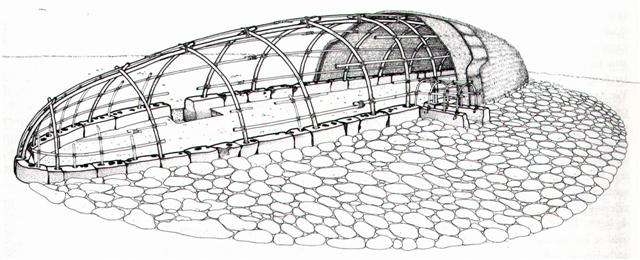3. However, neither of these two explanations may be the primary one. Instead we should observe two bent henua (GD37), meeting at two points, like the hinges of a clam.
Together this ought to mean a year, the two bent henua being half-years. The hinges would then be the solstices (though perhaps in ancient times the equinoxes - a more resonable interpretation because of the sharp bends = quick changes of the sun). There is a Nauru myth describing the limits of our (temporal) world like the shell of a clam (see honu). The interpretation of GD25 (pure) as hare, the (vacant) house of a creature, is reasonable. Because: "... to enter a war canoe from either the stern or the prow was equivalent to a 'change of state' or 'death'. Instead, the warrior had to cross the threshold of the side-strakes as a ritual entry into the body of his ancestor as represented by the canoe." (Starzecka) The hare paega on Easter Island therefore (I think) had their entrances in the middle of one of the long sides of the 'canoe'. And the foundation stones of a hare paega are similar to the henua in GD25. (Van Tilburg) Hare pure, 'the abode of the gods', is a possible reading of GD25; hare can be translated as 'structure' and in the structure of hare pure the 'openings' are at the 'stem' and the 'prow'. A canoe is also a structure and hare paega is like an overturned canoe (with openings for the gods at the stem and prow). The war canoe has a figure-head (rei) at the bow (mua) and another at the stem (muri):
Butterflies are also thin and move with the softest of sounds. Fatness and noise characterize life at its prime. |

